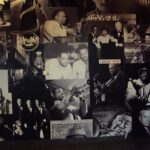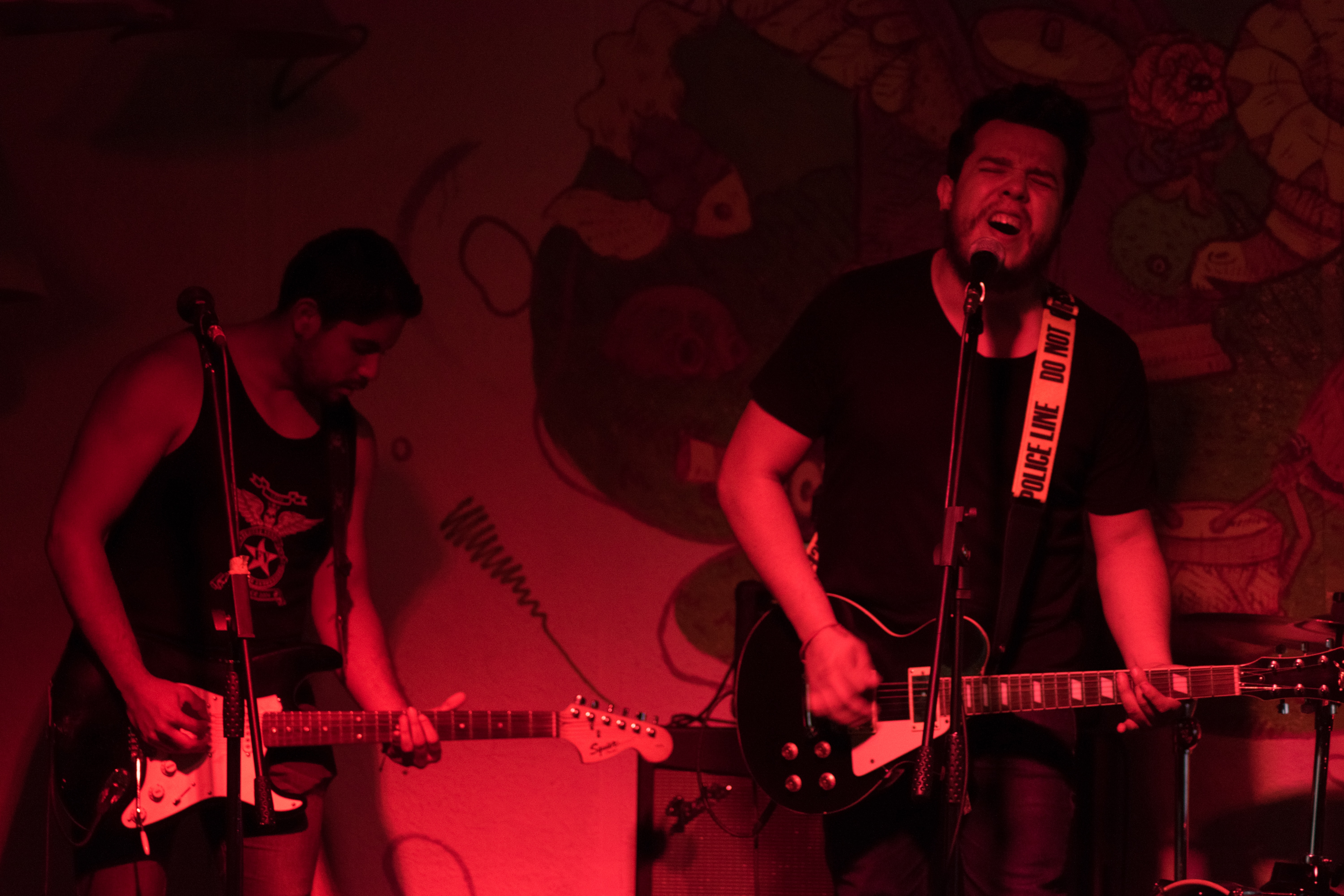Blog
now browsing by category
Your blog category
Rock Bands That Have Stood the Test of Time

Rock music has been a driving force in the music industry for decades, and there are certain bands that have managed to withstand the test of time. These legendary rock bands have not only created timeless music but have also built a dedicated fan base that spans generations. Let’s take a look at some of the rock bands that have been around for the longest time.
The Rolling Stones
No conversation about long-lasting rock bands would be complete without mentioning The Rolling Stones. Formed in 1962, this iconic British band has been rocking stages worldwide for over half a century. With Mick Jagger’s electrifying stage presence and Keith Richards’ legendary guitar riffs, The Rolling Stones have become synonymous with rock ‘n’ roll itself.
AC/DC
Since their formation in 1973, AC/DC has been delivering high-voltage rock anthems that have stood the test of time. Known for their electrifying performances and catchy guitar riffs, this Australian band has become one of the most influential rock bands in history. Despite lineup changes over the years, AC/DC continues to rock stages around the world.
U2
Irish rock band U2 formed in 1976 and has since become one of the most successful and enduring bands in the world. With frontman Bono’s powerful vocals and their socially conscious lyrics, U2 has created a unique sound that resonates with fans across the globe. Their longevity and ability to reinvent themselves have solidified their place in rock music history.
Aerosmith
American rock band Aerosmith has been rocking since 1970 and shows no signs of slowing down. Known for their bluesy hard rock sound and the charismatic presence of frontman Steven Tyler, Aerosmith has had a string of hits that have become rock classics. Their energetic live performances continue to captivate audiences worldwide.
Queen
Formed in 1970, Queen is a British rock band that needs no introduction. With the powerful vocals of Freddie Mercury, the virtuosic guitar skills of Brian May, and their innovative songwriting, Queen has left an indelible mark on the rock music landscape. Their anthems like “Bohemian Rhapsody” and “We Will Rock You” continue to be beloved by fans of all ages.
Deep Purple
Deep Purple, formed in 1968, is often credited as one of the pioneers of hard rock and heavy metal. With their iconic song “Smoke on the Water” and their virtuosic musicianship, Deep Purple has influenced countless rock bands that followed. Despite lineup changes throughout the years, the band continues to tour and create music.
The Who
Formed in 1964, The Who is a British rock band that has left an indelible mark on the music industry. Known for their energetic live performances and their rock opera “Tommy,” The Who has become one of the most influential bands of all time. With hits like “Baba O’Riley” and “My Generation,” they continue to inspire generations of rock musicians.
ZZ Top
Formed in 1969, ZZ Top is a Texas-based rock band that has become synonymous with blues-infused rock ‘n’ roll. With their signature beards and infectious grooves, ZZ Top has created a unique sound that has stood the test of time. Their hits like “Sharp Dressed Man” and “La Grange” continue to rock audiences worldwide.
Rush
Canadian rock band Rush formed in 1968 and has become known for their complex compositions and virtuosic musicianship. With Geddy Lee’s distinctive vocals, Neil Peart’s intricate drumming, and Alex Lifeson’s masterful guitar work, Rush has carved out a unique place in the rock music landscape. Their loyal fan base continues to support them even after their retirement from touring.
Black Sabbath
Considered one of the pioneers of heavy metal, Black Sabbath formed in 1968 and forever changed the course of rock music. With their dark and heavy sound, Black Sabbath laid the groundwork for countless metal bands that followed. Hits like “Iron Man” and “Paranoid” continue to resonate with fans of heavy music.
These rock bands have not only stood the test of time but have also left an indelible mark on the music industry. Their music continues to be celebrated and enjoyed by fans old and new. So, crank up the volume, put on your favorite rock anthem, and let these legendary bands take you on a timeless musical journey.
Are there any other bands you would like to add. Feel free to comment.
Old BandsAuto Amazon Links: No products found.
Wings Take Flight: How Paul McCartney Spread His Wings and Separated from the Beatles

Introduction
When you think of the Beatles, the iconic quartet of John Lennon, Paul McCartney, George Harrison, and Ringo Starr immediately comes to mind. The Beatles’ influence on music and pop culture is undeniable, but what happened when the Fab Four decided to go their separate ways? In this blog post, we’ll dive into how Paul McCartney separated his association with the Beatles and formed his own band, Wings.
The Beatles’ Breakup
In 1970, the world was shocked when Paul McCartney announced the dissolution of the Beatles. The band had experienced internal conflicts, creative differences, and the tragic loss of their manager, Brian Epstein. While the breakup left fans devastated, it also marked the beginning of a new chapter for each member.
Paul McCartney’s Solo Career
Following the breakup, Paul McCartney embarked on a successful solo career, releasing his debut solo album, ‘McCartney,’ in 1970. With hits like “Maybe I’m Amazed” and “Every Night,” McCartney showcased his songwriting prowess and versatility as a musician. However, he yearned for the camaraderie and collaborative spirit he had experienced with the Beatles.
The Birth of Wings
In 1971, Paul McCartney formed the band Wings, initially consisting of his wife Linda McCartney, Denny Laine, and drummer Denny Seiwell. The band’s name, Wings, symbolized McCartney’s desire to spread his creative wings and explore new musical territories.
Early Successes
Wings’ debut album, ‘Wild Life,’ was released in 1971. While it received mixed reviews from critics, it showcased the band’s raw energy and experimental sound. The following year, Wings released ‘Red Rose Speedway,’ which featured the chart-topping single “My Love.” The song’s success propelled the album to the top of the charts, solidifying Wings’ place in the music industry.
Band Member Changes
Throughout Wings’ existence, the band underwent several lineup changes. In 1973, Henry McCullough and Denny Seiwell left the band, leading to the addition of guitarist Jimmy McCulloch and drummer Geoff Britton. This new lineup recorded Wings’ most successful album, ‘Band on the Run,’ which included hits like the title track and “Jet.”
Wings’ Legacy
Wings’ music was characterized by its eclectic mix of rock, pop, and even elements of disco. The band’s sound evolved over time, with each album showcasing McCartney’s songwriting growth and experimentation. From the infectious hooks of “Silly Love Songs” to the introspective balladry of “Maybe I’m Amazed,” Wings’ discography remains a testament to McCartney’s talent and versatility.
Conclusion
Paul McCartney’s decision to form Wings allowed him to establish his own musical identity and distance himself from the shadow of the Beatles. While the band had its ups and downs, Wings achieved immense success and left an indelible mark on the music industry. So, the next time you hear a Wings song on the radio, remember the journey that led Paul McCartney to spread his wings and soar to new heights.
Auto Amazon Links: No products found.
The Rat Pack: Legends of Entertainment and the Origins of Their Iconic Name

Introduction
When it comes to legendary entertainment groups, few can match the charisma and talent of the Rat Pack. Comprising a group of iconic performers, the Rat Pack left an indelible mark on the entertainment industry during the 1950s and 1960s. In this blog post, we’ll take a closer look at who the Rat Pack were, how they came to be known by that name, and the enduring legacy they left behind.
The Rat Pack: Who Were They?
The Rat Pack was a group of entertainers who were known for their suave style, charm, and incredible talent. The core members of the Rat Pack included Frank Sinatra, Dean Martin, Sammy Davis Jr., Peter Lawford, and Joey Bishop. These talented individuals were not only friends but also worked together on stage, in films, and in nightclubs.
The Origins of the Name
The Rat Pack’s name has an interesting origin. It was initially coined by Lauren Bacall, a famous actress and wife of Humphrey Bogart. The story goes that one night, after a particularly long evening of partying, Bacall walked into a hotel room to find her husband and his friends—Sinatra, Martin, Davis Jr., Lawford, and Bishop—having a grand time. Seeing them, she reportedly exclaimed, “You look like a pack of rats!” But instead of taking offense, the group embraced the name and wore it as a badge of honor.
From that moment on, the Rat Pack became synonymous with this group of entertainers. Their camaraderie, on-stage chemistry, and shared love for music and entertainment solidified their status as a legendary group.
The Rat Pack’s Influence
The Rat Pack’s influence extended far beyond their performances. They were trendsetters, shaping the popular culture of the time. Their cool, sophisticated style and devil-may-care attitudes made them the epitome of “cool” in the 1950s and 1960s.
Frank Sinatra, the de facto leader of the group, was known for his smooth vocals and impeccable charm. Dean Martin, with his laid-back persona and effortless charisma, was the epitome of cool. Sammy Davis Jr. brought his incredible talent as a singer, dancer, and comedian, while Peter Lawford and Joey Bishop added their own unique contributions to the group dynamic.
The Rat Pack’s performances were legendary, with sold-out shows in Las Vegas and iconic films such as “Ocean’s Eleven.” They brought an infectious energy to the stage, captivating audiences with their banter, humor, and undeniable talent.
The Legacy of the Rat Pack
Even though the Rat Pack disbanded in the late 1960s, their legacy lives on. Their influence can still be felt in the world of entertainment today. Their style, charisma, and talent continue to inspire performers across generations.
Individually, each member of the Rat Pack achieved remarkable success in their careers. Frank Sinatra, in particular, went on to become one of the most influential and beloved singers of all time. Dean Martin became a household name with his successful television show, and Sammy Davis Jr. broke barriers as an African American entertainer in a predominantly white industry.
But it was their collective impact as the Rat Pack that truly left an indelible mark. They showed the world the power of friendship, camaraderie, and the joy of entertaining. Their performances were not just about the music; they were about creating an experience that left audiences wanting more.
In Conclusion
The Rat Pack was more than just a group of entertainers; they were a cultural phenomenon. Their unique blend of talent, style, and camaraderie made them legends in their own right. From their humble beginnings to their iconic performances, the Rat Pack will forever be remembered as a group that defined an era and left an enduring legacy in the world of entertainment.
Auto Amazon Links: No products found.
The Birth of Jefferson Starship in the 1960s

When it comes to iconic rock bands of the 1960s, Jefferson Starship is a name that stands out. With their unique blend of psychedelic rock and folk influences, they captivated audiences and left an indelible mark on the music scene. In this blog post, we will take a closer look at how Jefferson Starship came to be and their journey in the 60s.
The Early Days
Jefferson Starship traces its roots back to a group called Jefferson Airplane, which was formed in San Francisco in 1965. At the time, the band consisted of Marty Balin, Paul Kantner, Jorma Kaukonen, Jack Casady, Signe Toly Anderson, and Skip Spence. Their debut album, “Jefferson Airplane Takes Off,” was released in 1966 and showcased their folk-rock sound.
However, it was in 1967 that Jefferson Airplane truly made their mark with the release of their seminal album, “Surrealistic Pillow.” This album featured hits like “Somebody to Love” and “White Rabbit,” which became anthems of the counterculture movement. The success of “Surrealistic Pillow” propelled Jefferson Airplane to the forefront of the psychedelic rock scene.
The Evolution into Jefferson Starship
As the 60s drew to a close, Jefferson Airplane underwent several lineup changes. In 1970, vocalist Grace Slick joined the band, bringing her powerful vocals and charismatic stage presence. With Slick on board, the band released the critically acclaimed album “Volunteers” in 1969, which further cemented their status as one of the leading rock bands of the era.
By the early 1970s, tensions within the band were rising, leading to the departure of Marty Balin and the formation of a new group called Jefferson Starship. The lineup now included Paul Kantner, Grace Slick, David Freiberg, Papa John Creach, and John Barbata. The band chose the name “Starship” to reflect their new musical direction and the evolving sound of the 70s.
Success and Challenges
With the release of their debut album, “Dragon Fly,” in 1974, Jefferson Starship achieved commercial success. The album featured the hit single “Ride the Tiger” and showcased a more polished and radio-friendly sound compared to their earlier work. This marked a new chapter for the band as they embraced a more mainstream sound.
Over the next few years, Jefferson Starship continued to release successful albums, including “Red Octopus” in 1975 and “Spitfire” in 1976. These albums produced chart-topping hits like “Miracles” and “With Your Love,” solidifying the band’s place in the rock music landscape.
However, the 1980s brought new challenges for Jefferson Starship. Internal conflicts and creative differences led to further lineup changes, and the band experienced a shift in their musical direction. In 1984, they released the album “Nuclear Furniture,” which saw them experimenting with a more pop-oriented sound.
A Lasting Legacy
Despite the challenges they faced, Jefferson Starship’s impact on the music industry cannot be denied. They were pioneers of the psychedelic rock movement and helped shape the sound of the 60s and 70s. Their songs continue to resonate with audiences today, and their influence can be heard in the music of countless artists.
While the lineup of Jefferson Starship has changed over the years, the band’s commitment to creating music that pushes boundaries and challenges conventions remains unchanged. They continue to tour and perform, delighting fans both old and new.
In conclusion, Jefferson Starship’s journey began in the 60s as Jefferson Airplane and evolved into a new entity with a fresh sound. Their music captured the spirit of the counterculture movement and left an indelible mark on the rock music landscape. Their legacy continues to shine brightly, and their music will forever hold a special place in the hearts of music lovers.
Auto Amazon Links: No products found.
John Williams, the Maestro of TV and Movie Music

The Legendary John Williams
When it comes to iconic music in the world of TV and movies, one name stands above the rest: John Williams. With a career spanning over six decades, Williams has composed some of the most memorable and recognizable scores in cinematic history. From the thrilling adventures of Indiana Jones to the enchanting world of Harry Potter, his music has touched the hearts of millions around the globe.
A Legacy of Excellence
John Williams was born on February 8, 1932, in Floral Park, New York. His musical journey began at a young age, as he learned to play the piano and later the trumpet. After studying at the Juilliard School of Music and serving in the Air Force, Williams embarked on a career as a jazz pianist and studio musician.
However, it was his collaboration with legendary film director Steven Spielberg that would catapult him to stardom. Their partnership began in 1974 with the film “The Sugarland Express” and continued with classics like “Jaws,” “E.T. the Extra-Terrestrial,” and the unforgettable “Star Wars” series. Williams’ ability to capture the essence of each story through his music has made him an integral part of the cinematic experience.
Unforgettable Melodies
One of the reasons why John Williams’ music resonates so deeply with audiences is his knack for creating unforgettable melodies. From the triumphant “Superman” theme to the hauntingly beautiful “Schindler’s List” soundtrack, each composition has a unique and powerful impact. His ability to evoke emotion through music is unparalleled, and his scores have become inseparable from the films they accompany.
Williams’ music is not limited to the big screen; he has also composed for numerous TV shows, including the beloved “Lost in Space” and the iconic “Gilligan’s Island” theme song. His versatility as a composer allows him to adapt to various genres and capture the essence of each story he works on.
Awards and Accolades
John Williams’ talent and contribution to the world of music have not gone unnoticed. He has received a staggering number of awards and accolades throughout his career, including five Academy Awards, four Golden Globe Awards, and twenty-five Grammy Awards. In 2005, he was honored with the National Medal of Arts, the highest honor bestowed upon artists by the United States government.
A Lasting Impact
John Williams’ influence extends far beyond the realm of film and television. His music has become ingrained in popular culture, with many of his compositions being instantly recognizable to people of all ages. Whether it’s the suspenseful notes of “Jaws” or the epic theme of “Star Wars,” his music has the power to transport listeners to another world.
Williams’ legacy will continue to inspire future generations of composers and musicians. His ability to create melodies that capture the essence of a story is a testament to his genius. As we listen to his music, we are reminded of the power of storytelling and the impact that music can have on our lives.
The King of TV and Movie Music
John Williams has rightfully earned the title of the King of TV and Movie Music. His contributions to the world of entertainment have left an indelible mark, and his music will continue to be cherished for years to come. Whether you’re a fan of his iconic film scores or a casual listener, there’s no denying the magic and brilliance of John Williams’ music.
Auto Amazon Links: No products found.
The Extravagant World of Concert Productions: Exploring the Artists and Bands Who Spare No Expense

Introduction
When it comes to live performances, some musical artists and bands go above and beyond to create unforgettable experiences for their fans. From elaborate stage designs to mind-blowing visual effects, these artists spare no expense in bringing their music to life. In this blog post, we will explore some of the most extravagant concert productions and the artists who have invested heavily in creating larger-than-life experiences.
The King of Pop: Michael Jackson
It’s no surprise that the late Michael Jackson, the undisputed King of Pop, tops the list of artists who spent the most money on their concert productions. Known for his groundbreaking performances, Jackson revolutionized the concept of live shows with his iconic tours, including the “Bad World Tour” and the legendary “Dangerous World Tour.”
With state-of-the-art special effects, intricate choreography, and mesmerizing stage setups, Jackson’s concerts were nothing short of theatrical spectacles. From his signature moonwalk to the jaw-dropping “Thriller” performance, every detail was carefully crafted to transport the audience into a world of music and magic.
It is estimated that Jackson spent over $30 million on the production of his “Dangerous World Tour” alone, making it one of the most expensive concert productions of its time.
U2: Taking Concert Productions to New Heights
Irish rock band U2 is renowned for their visually stunning and technologically advanced concert productions. With a reputation for pushing boundaries, U2 has consistently delivered awe-inspiring performances that leave audiences in awe.
One of their most notable tours, “360° Tour,” featured a colossal, one-of-a-kind stage known as “The Claw.” This massive structure stood at 165 feet tall and housed an intricate lighting system, a 360-degree video screen, and a complex sound system. The sheer scale of this production required an investment of over $750,000 per day during the tour.
U2’s commitment to creating immersive experiences for their fans is evident in their attention to detail and their willingness to embrace cutting-edge technology. Their concerts are a testament to their dedication to pushing the boundaries of what is possible in live entertainment.
Lady Gaga: The Queen of Extravaganza
Known for her eccentricity and flamboyant style, Lady Gaga is a force to be reckoned with when it comes to extravagant concert productions. From her outrageous costumes to her elaborate stage designs, Gaga’s performances are a feast for the senses.
One of her most memorable tours, the “Monster Ball Tour,” featured a castle-inspired stage complete with moving parts, hidden trap doors, and an array of pyrotechnics. The production costs for this tour exceeded $2.5 million per show, making it one of the most expensive solo tours in history.
Gaga’s dedication to creating immersive experiences for her fans has earned her a reputation as one of the most innovative and visually captivating artists of our time.
Conclusion
From Michael Jackson’s groundbreaking performances to U2’s technologically advanced stage setups and Lady Gaga’s extravagant productions, these artists have set the bar high when it comes to concert productions. Their commitment to creating unforgettable experiences for their fans is a testament to their artistry and passion for their craft.
While the artists mentioned in this blog post have spent a significant amount of money on their concert productions, it is important to remember that the true value lies in the memories and emotions they create for their audiences. These extravagant productions serve as a reminder of the power of music to transcend boundaries and create moments that will be cherished for a lifetime.
Auto Amazon Links: No products found.
Exploring the Alternative Music Scene of the 80s: Iconic Bands That Shaped the Era

When it comes to the music of the 80s, one genre that stands out is alternative music. This unique and rebellious style of music gained popularity during the decade, bringing forth a wave of talented bands that would leave a lasting impact on the music industry. In this article, we will take a trip down memory lane and explore some of the iconic bands that were known for their alternative music in the 80s.
The Cure
No discussion about alternative music in the 80s would be complete without mentioning The Cure. With their distinctive sound and gothic-inspired image, The Cure captured the hearts of fans worldwide. Led by the enigmatic Robert Smith, the band produced hits like “Just Like Heaven” and “Friday I’m in Love,” which showcased their ability to blend melancholic lyrics with catchy melodies.
R.E.M.
R.E.M. is another band that made a significant impact on the alternative music scene of the 80s. With their jangly guitars and introspective lyrics, R.E.M. brought a fresh and unique sound to the airwaves. Songs like “Losing My Religion” and “The One I Love” became anthems for a generation, solidifying R.E.M.’s status as one of the most influential bands of the era.
Depeche Mode
Known for their synth-pop sound and dark lyrics, Depeche Mode pushed the boundaries of alternative music in the 80s. Their electronic beats and haunting melodies created a mesmerizing atmosphere that captivated listeners. Hits like “Enjoy the Silence” and “Personal Jesus” showcased their ability to merge catchy hooks with thought-provoking themes, earning them a dedicated fanbase that still exists today.
Talking Heads
Talking Heads brought a unique blend of art rock and new wave to the alternative music scene of the 80s. With frontman David Byrne’s quirky vocals and the band’s experimental sound, Talking Heads stood out from the crowd. Songs like “Once in a Lifetime” and “Burning Down the House” became instant classics, showcasing the band’s ability to create infectious rhythms with thought-provoking lyrics.
Sonic Youth
Sonic Youth’s avant-garde approach to alternative music made them pioneers of the genre in the 80s. With their use of unconventional guitar tunings and dissonant melodies, Sonic Youth created a sound that was both experimental and captivating. Songs like “Teen Age Riot” and “Kool Thing” showcased their ability to push boundaries and challenge the status quo, cementing their place in alternative music history.
Pixies
While they may not have achieved mainstream success during the 80s, Pixies’ influence on alternative music cannot be overstated. Their loud-quiet-loud dynamic and raw energy paved the way for the grunge movement of the 90s. Songs like “Where Is My Mind?” and “Debaser” showcased their ability to create a unique blend of punk and alternative rock that resonated with fans and influenced countless bands that followed.
Conclusion
The alternative music scene of the 80s was a breeding ground for groundbreaking bands that pushed the boundaries of what was considered mainstream. The Cure, R.E.M., Depeche Mode, Talking Heads, Sonic Youth, and Pixies are just a few examples of the incredible talent that emerged during this era. Their unique sounds and thought-provoking lyrics continue to inspire and captivate audiences to this day, leaving an indelible mark on the music industry.
So, if you’re feeling nostalgic or looking to discover some new music, take a trip back to the 80s and immerse yourself in the alternative music that defined a generation.
Auto Amazon Links: No products found.
The Controversial Afternoon Delight: A Blast from the Past

Do you remember the good old days when the song “Afternoon Delight” by Starland Vocal Band caused quite a stir? It’s hard to believe that a sweet, innocent-sounding tune could be the subject of controversy, but back in the day, it certainly was. Let’s take a trip down memory lane and explore why this seemingly harmless song caused such a fuss.
The Innocent Exterior
Released in 1976, “Afternoon Delight” quickly became a hit, reaching the top of the charts and winning a Grammy Award for Best Vocal Arrangement for Two or More Voices. On the surface, the song appears to be an innocent ode to daytime romance and the joys of love.
The catchy melody and harmonious vocals make it an easy sing-along, and it became a favorite on the radio and at parties. But beneath its cheerful facade, some listeners started to question the true meaning behind the lyrics.
Unveiling the Double Entendre
As the popularity of “Afternoon Delight” grew, so did the speculation about its hidden message. The lyrics, which talk about “skyrockets in flight” and “afternoon delight,” raised eyebrows and led to various interpretations.
Some argued that the song was a euphemism for casual daytime encounters of a romantic nature. Others believed it was a playful reference to the joys of afternoon delight in a more innocent sense, like enjoying a picnic or spending quality time with a loved one.
Regardless of the true meaning, the controversy surrounding the song only fueled its popularity, as people debated and discussed its lyrics over cups of coffee and glasses of wine.
From Controversy to Cult Classic
Despite the controversy, “Afternoon Delight” continued to climb the charts and gain a loyal following. It became a cultural phenomenon, inspiring parodies, covers, and even a memorable appearance in the hit TV show “Arrested Development.”
Over time, the controversy surrounding the song faded, and it settled into its place as a beloved classic. Today, it is often associated with nostalgia for the carefree days of the ’70s and is a staple on feel-good playlists.
Lessons Learned
The controversy surrounding “Afternoon Delight” serves as a reminder that sometimes, even the most innocent-seeming things can spark debate and disagreement. It also highlights the power of music to evoke emotions and ignite conversations.
So, the next time you find yourself humming along to a catchy tune, take a moment to reflect on its lyrics and consider the different interpretations that may exist. You never know what hidden meanings or controversies may lie beneath the surface.
In the case of “Afternoon Delight,” it may have caused a stir back in the day, but it also gave us a memorable song that continues to bring joy to listeners today.
So, let’s raise a glass to the controversial “Afternoon Delight” and embrace the nostalgia it brings. After all, who doesn’t love a little bit of afternoon delight?
Auto Amazon Links: No products found.





 D5 Creation
D5 Creation